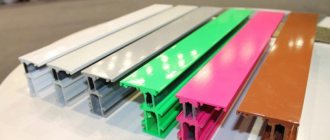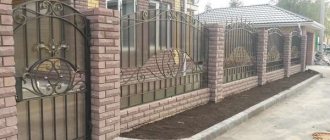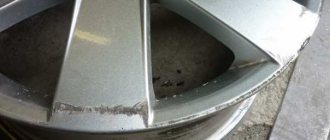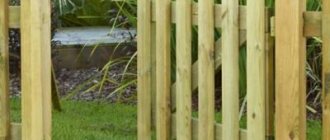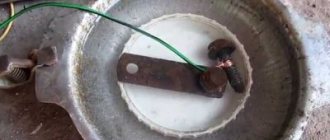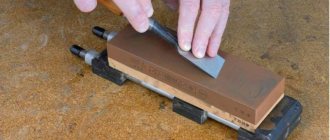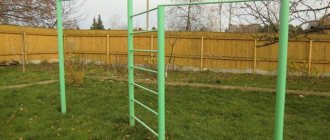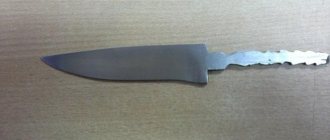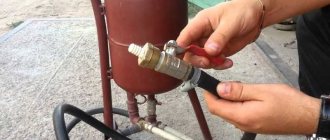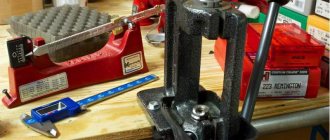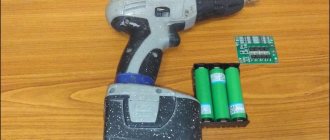Painting forged products with your own hands
Since ancient times, metal has been one of the most important materials, both in production and in everyday life. At the same time, despite the strength, reliability and very long service life, even metal structures can be exposed to negative environmental factors.
Forged products are various metal structures that are assembled using any methods from individual elements. These include different types of wickets, fences, gates, railings on stairs and balconies, and many other products.
Before painting them, the surface must be primed. Moreover, you can use paint and varnish material and primer in tandem.
Special preparation of metal products before painting
Initially, primary processing of metal surfaces is carried out, and only then paint and varnish material is applied. If forged products have been under the direct influence of environmental factors for a long time, then due attention will have to be paid to their pre-treatment. Thus, it will be necessary to remove the paint that has already peeled off, as well as get rid of the loose layer of rust. All this can be done with coarse sandpaper, a wire brush or a sander. In cases where there are quite a lot of metal products or elements, a sandblasting machine is used.
Preparatory work
Preparation for painting the gate must be carried out in strict sequence. The following work steps must be completed:
Washing or cleaning from dirt. Contaminants are removed, as well as other substances adhering to the canvas are washed away. The most thorough work can be done using a hose. Pay special attention to corners and hard-to-reach places. Surface cleaning. At this stage, it is necessary to remove peeling paint from the canvas. If the layer of the previous coating is large, then the entire thickness of the old paint must be removed. The work can be done either with a metal brush or with a hair dryer. It is possible to use a grinder or a drill with a special attachment – a “brush”. Grinding. It is done with fine-grained sandpaper, regardless of the method of doing the work - manually or using a drill that has a special attachment. The mechanized method speeds up the work. However, you cannot do without manual grinding in hard-to-reach places. Degreasing. Performed with solvent after cleaning and sanding
It is important to treat the entire surface without gaps, not forgetting hard-to-reach areas. The quality of adhesion of further coatings to metal depends on this.
Of course, changes and additions to the work order are possible. Some gate owners wash them after cleaning and polishing, using detergents. This allows you to save on degreasing products. But it should be remembered that these works must be performed especially carefully, and detergents cannot replace solvent.
Degreasing
The next step is degreasing. When cleaning new forged elements, certain rules must be followed. Thus, ferrous metal products straight from the factory may have stains of an oil or grease nature. Also, various lubricants may remain on their surface. Under such circumstances, you can get rid of all this by using any solvent or a 5% solution of a synthetic detergent to wash off. Metal products that have a smooth, shiny surface require sanding with 40-grit or higher sandpaper to remove dust.
In this case, zinc surfaces are washed off under high pressure of water, while aluminum surfaces are not cleaned at all, they are only degreased.
How to choose blacksmith paint?
Let's look at some types of hammer effect paint from different manufacturers.
- “Hammerite” is an English paint for metal. Considered one of the best. First of all, she is very pleasant to work with. This is perhaps the best option for applying paint with a brush. Secondly, in terms of the aesthetics of the result obtained, this paint is unrivaled. It is distinguished by the noble effect of old metal. A painted forged product looks as if it was made in a blacksmith shop. Applying a small amount of patina to the surface will enhance the effect of noble aging of the metal.
- Paint "Polymetal" from (Türkiye). The price is cheaper than Hammerite, but the quality is quite good. An undoubted advantage is the rich range of colors. Disadvantage: limited application possibilities (preferably applied with a spray gun). Want to paint with a brush? You can try, but keep in mind: only a professional can achieve a truly good result.
- "Tambour" (Israel). A high-quality analogue of Turkish paint “Polymetal”: advantages, disadvantages and even brands of different colors are the same.
- Senta paint from (Türkiye).
- “Poller” is an excellent paint, much cheaper than imported analogues. The coloring quality is good. The only drawback of this paint is the lack of a “three in one” effect: the surface requires priming before painting.
Painting small elements with patina
Coloring of forged products
In order to achieve aesthetic, reliable and wear-resistant painting, it is necessary to carry out all finishing work in dry and windless weather. The air temperature should be in the range from +20° to +36°, and the composition should not be lower than +16°. Humidity parameters - from 40 to 85%. You also need to ensure that direct rays of the sun do not fall on the coating, which has not yet dried. The final coat of paint for forging is applied two hours after painting, although the time depends directly on the composition used. Corners and edges are painted most diligently, as they are most susceptible to corrosion.
There are several stages of painting forged products:
- Using materials to transform rust. Once the appropriate compound has been applied, the rust is converted into a chemically neutral coating of a durable compound, thereby enhancing the anti-corrosion properties of the primer.
- Applying primer. A high-quality primer composition prevents the appearance of rust, has high moisture resistance, and promotes high adhesion to metal structures and further coating. Traditional primer has little resistance to wear and minimal decorative properties. But currently, special “three-in-one” primer-enamels are produced, which can provide the product with an attractive appearance and provide maximum protection from the effects of corrosion. The primer can be universal or specialized - for work only outside or only inside. Therefore, you need to carefully read the label when choosing soil.
- Painting stage. The paint must be applied over the primer layer. It protects the surface from the negative effects of environmental factors, such as precipitation, sunlight, and significant temperature changes. In order to enhance protection and increase the wear resistance of paints, special varnishes can be used as an additional layer.
Thanks to modern technologies, it has become possible to combine the properties of all layers. For example, rust-transforming substances can be added to the primer layer, and components with an anti-corrosion effect can be added to the paintwork material.
Thus, the combined paint for forging makes forged products look spectacular for decades and at the same time increases their service life, protecting them from the negative effects of corrosion.
Secrets of patination
The choice of patination method depends on the result you require.
If you apply patina with a sponge, the layer will come out very heterogeneous and light. Suitable if your goal is only to emphasize some place on the product.
Apply paint to kinks and corners. Thus, a “time imprint” will appear on the item.
Important. When working with a sponge, apply light strokes to the material. Otherwise, a trace of foam rubber will appear on the item, which will have to be washed off or covered with a new layer.
What nuances should you consider if you decorate metal with a brush?
- The brush bristle must be dry and clean. Otherwise, dirty spots will remain on the metal and instead of the desired effect you will get a “painted fence”.
- Apply a little patina to the palette and rub it in with a brush. After this, start covering the material with sweeping movements.
- The brush is suitable for applying deeper layers of patina when the effect of light strokes is not enough.
- If you need to make the paint more transparent, dilute it with a solvent. Adjust the proportions to your taste.
- Didn't the plot work out? Wipe the area where the patina was applied incorrectly with a cloth and brush again.
Applying patina (1 video)
Special compositions for forged products
Forging paints for forged coatings
After painting metal surfaces with a special composition, artistic forging acquires the color and shade necessary for a given interior, and the composition also protects the coating from corrosion. There are several types of special WS-Plast forging paints made in Germany, which are among the highest quality. Since they are made from acrylic binders, their service life reaches 8 years. This paint and varnish material is applied to various surfaces, even to those already painted. But at the same time it is necessary to do a test painting. In this case, the paint consumption is 125 grams per 1 m2.
Among blacksmith paints, another composition that should be highlighted is WS-Patina with a patina effect, which creates the effect of gold, copper or silver. Also interesting is the Zinga coating, which is a ready-made solvent-based composition. Such a coating will help effectively protect the metal surface from physical and electrochemical factors, as well as from corrosion. Thanks to this, the wear resistance of the coating is more than 40 years, it all depends on the thickness of the applied composition. In addition, some companies offer primer and paint in the same alkyd base that are ideal for forged products.
Three-component paints
Recently, special three-component paints have been developed, where one container contains a rust transformer, a primer and a decorative coating. This allows you to apply the composition directly to the rust, without forgetting to clean off its loose layer. Currently, such compositions are produced by both foreign and domestic manufacturers. The highest quality compounds are from Hammerite. As a result of the fact that solvents evaporate very quickly from painted surfaces, artistic forged products dry in 60-90 minutes. Of the domestic manufacturers, the most popular are paints from.
This paint contains Novax alkyd-based enamel with anti-corrosion properties and a two-component composition designed specifically for use in aggressive environmental conditions.
Thus, today the market offers a large assortment of paints and varnishes for wrought iron gates or fences, as well as for other similar products. When applied correctly, these compounds will provide long-term protection of the metal from corrosion.
Which primer should I choose?
A primer is needed to protect the wrought iron gates from corrosion and to ensure that the paint layer adheres smoother and better. Some types of primers add substances that transform the chemical composition of rust.
Types of gate coverings
An integral part of others are inhibitors (substances that slow down the oxidation process of the metal). According to manufacturers, the use of such primers allows you to at least double the service life of paints applied over the primer.
Step-by-step technological process for making a reverse curl on the “Snail” machine
The rolling rollers perform sequential crimping of the pipe. Protruding ribs are formed, and the weld remains inside the layer, offset to the center.
The pipe ends are compressed on parallel eccentric rollers. It becomes like a stripe. In this form it is easier to fix it on the machine.
The shank is formed in a special device. Now the workpieces will be fixed on the machine in one movement.
The workpiece is fixed in the center. There is a groove that secures the shank. It can be seen that the spiral has a uniform descent in height.
After fixing the shank, the electric motor is turned on. Forming of the part begins.
The loop is formed when the workpiece touches a special support element. It is more often called the support shaft. To reduce the force, it is equipped with a bearing. The part rotates freely around the support.
Part of the spiral is formed. But if it is necessary to process for a longer length, a removable element will be installed.
A blank is also formed from the other end. Here the master determines in which direction to bend the part.
How to paint a fence so it doesn't rust
Well, there are no special tricks here:
- We always paint from top to bottom - no one has canceled the laws of gravity, so moisture will always flow down and not rise.
- We always paint in the direction from the center to the periphery of the structure: this way you can always correct shortcomings and flaws.
- We always paint in the direction of the rays of sunlight: paint layers will be less visible, especially if we do not use a spray bottle.
- When painting, you should use a micrometer to determine the minimum layer thickness: it should not be less than 10 microns.
- Since exterior paint is a quick-drying type, we try it on the inside of the fence
Have you gotten the hang of it? Go ahead and don't let the weather stop you!
After looking at the works of my neighbors, I came to the conclusion that it is better to order wrought-iron fences on a turnkey basis. Painted, oxidized, blued. But not welded! What do you think?
